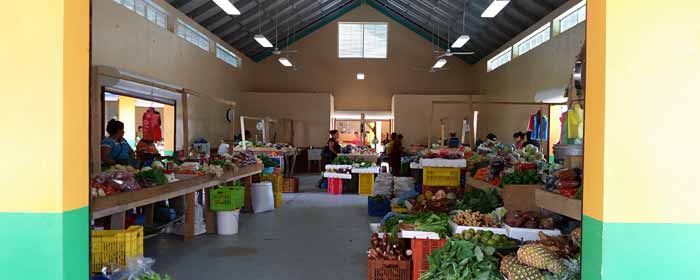
If you have eaten with me on even one occasion, you know that I am a complete vegetable geek. I love all things veggie and I especially enjoy experimenting with new ones. And that's not even to mention foreign fruit!
One of my favorite things about living in Belize has been having a whole new suite of produce to try. These are my ten favorite Belizean fruits and vegetables:
1. Jippi Jappa
Jippi Jappa is a woody palm-like plant that is most famously used to make baskets and hats. I have tried my damnedest and cannot find any real information about jippi jappa as a food online. I'm not sure whether this is because I don't know the English word for the plant or because there isn't a culture that both eats jippi jappa and also actively posts about food on the internet.

The jippi jappa plant. The edible part is young shoots that pop up at the bottom.
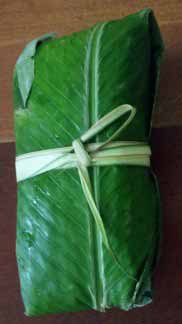
Waha leaf packaging
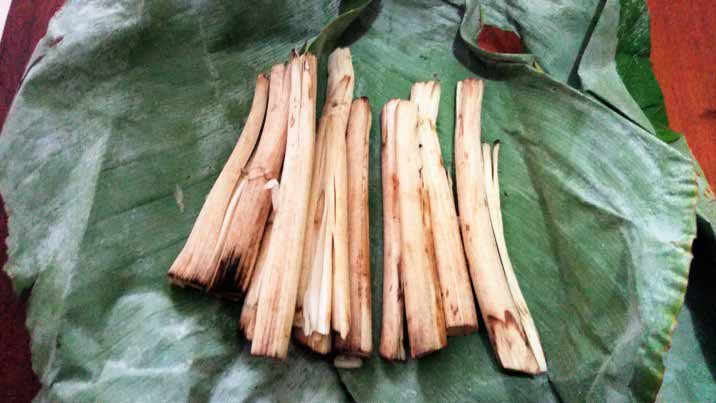
The Versatile Jippi Jappa
The edible part of the jippi jappa shoot can be found in the markets wrapped in large green waha leaves. It looks like a bizarre, thick, white asparagus, but when you cook it down it peels apart like string cheese. It has a buttery soft texture and tastes similar to hearts of palm and I LOVE it.
2. Coco Yam (AKA Taro)
Belizeans universally call this coco, so it took me a long time to figure out that the yam I've come to love is the same flavor I've had in purplish taro bubble teas in the States. It has flaky brown skin like cassava but it's smaller and rounded and it sometimes has pink or purple flesh. Coco has the subtle sweetness of a yam and the creamiest consistency of any root vegetable I've tried. It's sweet and savory and all around amazing.
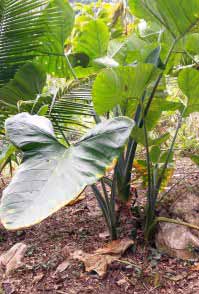
The plant. It has HUGE leaves.
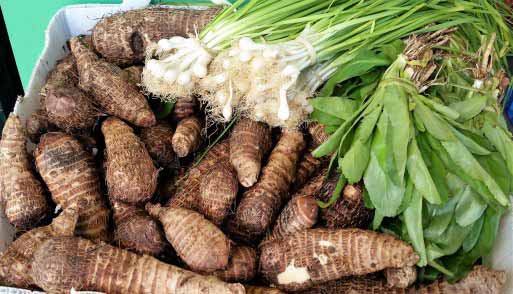
The Tender Coco Yam
3. Cacao
Cacao is a gold-star hero. It's akin to a fruit superman. What other crop tastes delicious as a raw fruit, has a rich density of antioxidants and vitamins, encourages sustainable land development, and forms the base of chocolate, the queen of all foods?
We work with cacao extensively at Ya’axché because it requires shade and thus thrives on sustainable agroforestry farms. It is also extremely valuable in the U.S. market when grown organically (see: the chocolate aisle at Whole Foods). As such, encouraging cacao farming contributes both to conservation and also to improving livelihoods for local organic farmers.
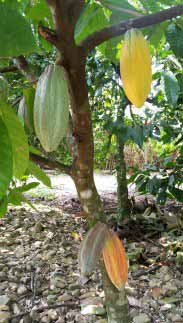
All Hail the Cacao Tree
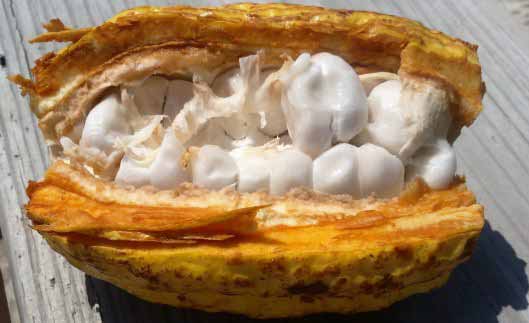
The Indomitable Cacao
That's not even to mention the taste! Aside from the near-orgasmic decadence of good Belizean chocolate, cacao is delicious as a raw fruit. When you open a cacao pod, it contains rows of cacao beans which are later fermented, roasted, and ground into chocolate. Each of the beans is encased in a pillowy, sticky, white substance that tastes like a mixture of lychee and honey. Just pop the cacao bean in your mouth, suck on it, and feel yourself becoming a happier and healthier person.
4. Breadfruit
It took me ages to try bread fruit because it looks so intimidating. The size of a small watermelon, lime green, and vaguely spiky, it sits in piles at the back of the market and seems to say, "I am a fruit for experts."
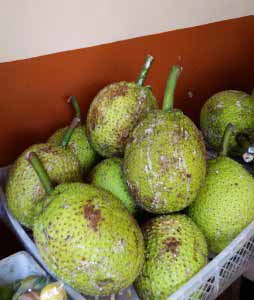
The Menacing Breadfruit
In reality, though, breadfruit is extremely easy to prepare and universally likeable. It is very starchy and has a slightly sweet flavor that is reminiscent of bread-hence the name. It's excellent baked or fried into chips. (Bonus: Breadfruit is easy to grow, nutritious, and hardy, making it an important fruit for food security in tropical countries. Check out the Breadfruit Institute for more info.)
5. Jamaica Limes
It started to confuse me when multiple types of limes began appearing in the market. Belizeans rarely differentiate between varieties of produce - they have dozens of types of squash that they call "squash" and seemingly every time I ask about a new fruit it's a "plum." As such, it took a while before I heard a name for these other than just "limes."
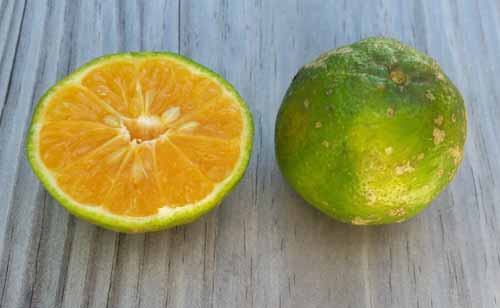
The Elusive Jamaica Lime
Jamaica limes are my absolute favorite. The taste is 75% lime and 25% orange-you can almost bear to bite into them raw. They are green on the outside and orange on the inside and they are never, ever dry. Seriously, these things produce a ton of lime juice every single time. It's awesome.
6. Sapodilla
This fruit, along with its close relative Mamey, is found across Central America. It has thin papery brown skin and a deep red-orange interior. The flesh has the texture of a juicy peach and tastes like a pear that’s been soaking in brown sugar and butter. It’s downright decadent.
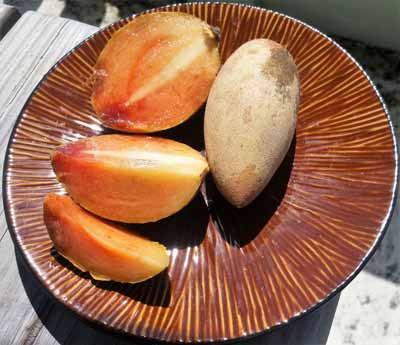
The Decadent Sapodilla
7. Callaloo
Callaloo is everywhere in Belize. It's a leafy green that is cooked and served exactly like spinach. Though not as bitter as kale, it has a slightly more bitter and earthy flavor than spinach. It also has thick central stems which can be chopped up and stir-fried like green beans.
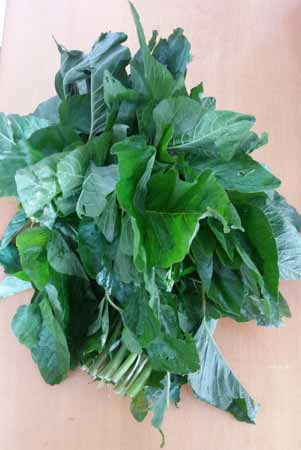
The Humble Callaloo
8. Cho Cho (AKA Chayote)
Cho Cho seems like it would be a squash, but it's not-it grows on a tree. It's cooked and served similarly to a squash but it has a lighter, sweeter flavor. It tastes like a cross between yellow summer squash and apple. According to my coworker who grew up in Mexico, chayote is to Mexican kids what lima beans are to American kids: "Ewwwwww, not chayote!!!! I hate chayote!"
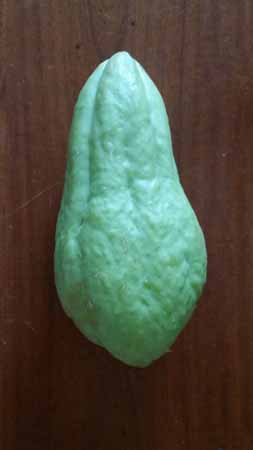
The Divisive Cho Cho
9. Culantro
Culantro sounds like cilantro. It tastes like cilantro. It's used like cilantro. The biggest difference is appearance: culantro has long, skinny leaves that can be chopped in their entirety and thrown into whatever you're cooking. This makes it way easier to use than cilantro - no need to remove pesky stems!
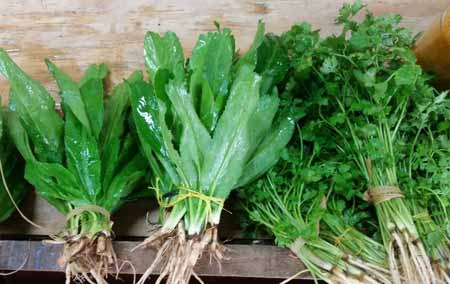
On the left, culantro. On the right, cilantro.
10. Cohune Cabbage
Ah, Cohune Cabbage. It is unbelievably delicious but it's also the first vegetable I've ever met that makes me feel guilty. Cohune cabbage is the heart of a cohune palm tree. It can be several feet tall and six or eight inches in diameter, resembling an enormous bone. In Belize it's chopped and stewed with turmeric into a delicious, soft, buttery side-dish. The problem? Removing the cohune cabbage kills the cohune tree, every single time. Every time I indulge in it I have to convince myself that the cohune was coming down anyway and this using the tree in its entirety.
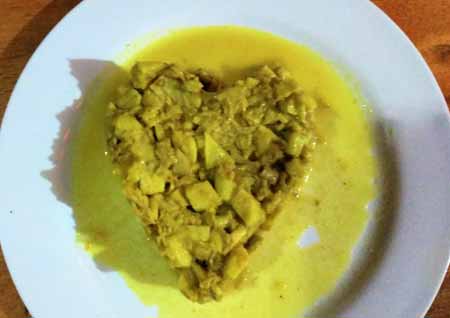
The Criminal Cohune Cabbage
Bonus: The Double Barrel Banana
The unique thing about eating bananas in Belize is that you are essentially eating reject bananas. Bananas are one of Belize's few major exports so all the 'perfect' bananas are sent to Mexico and the United States and Belizeans are left with the 'imperfect' ones. Most of the time, you can't tell a difference; but every so often you find what I have coined "double-barrel bananas".
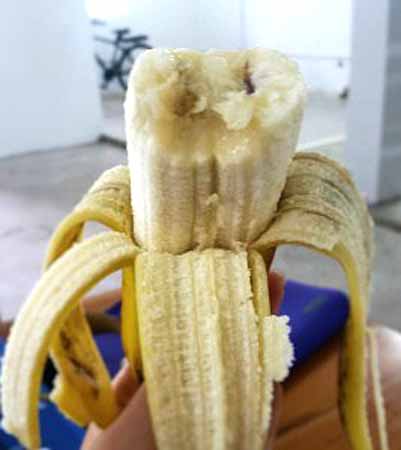
The Dreaded Double Banana
The first time I saw a double-barrel banana I thought I'd found the messiah fruit - I was ready to post a picture on Reddit and have the entire internet community bow at my feet. Then I showed it off at work and one of my Mayan coworkers laughed at my incredulity. According to her: "In my culture, a traditional mother wouldn't let her daughter eat fruit like that. Superstition says that if you eat that banana, you will have twins."
I'm a big fan of double barrel bananas. Hopefully I never want children, because they'll most definitely be a whole line of twins.
Source: Furiosities.com

